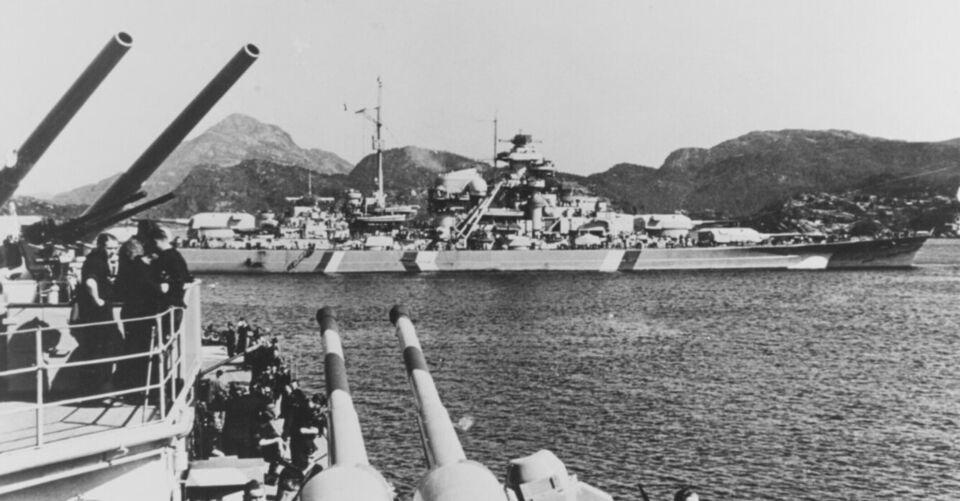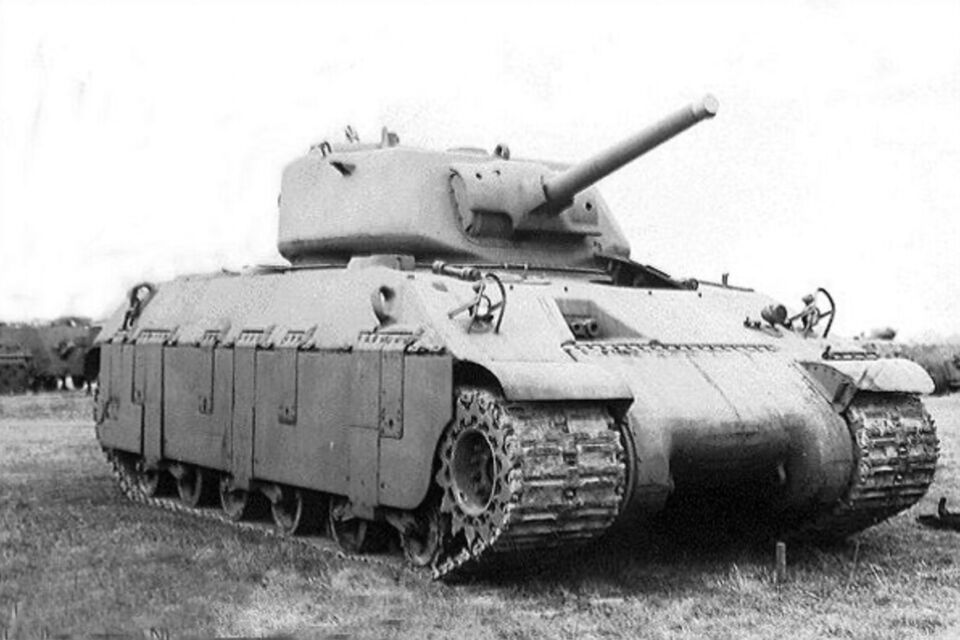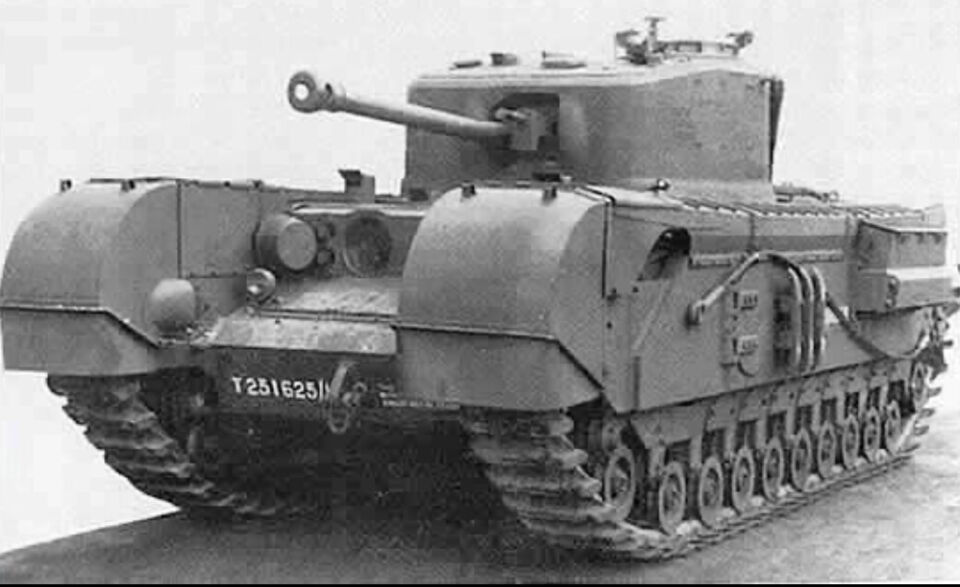833 days, that was the lifespan of the Bismarck, from her launch to her scuttling on May 27, 1941. She was one of the largest and most famous battleships in the world like the Japanese Yamato and the American Missouri. The Bismarck belonged to the Bismarck class, which also included her sister ship, the Tirpitz. The Bismarck rose to fame by sinking HMS Hood on May 24, 1941, earning a worldwide reputation as one of the deadliest battleships ever built. In just five minutes, the HMS Hood was destroyed. Afterwards, the British Royal Navy hunted the Bismarck across the North Atlantic. Following a torpedo attack by a squadron of Swordfish torpedo bombers, she lost her rudder and became unable to maneuver. On May 27, 1941, her crew finally scuttled the Bismarck in the Atlantic Ocean, while the ship continued to engage numerous British battleships, cruisers, and destroyers.
The T14 was a heavy tank that was the result of a joint American and British project aimed at developing a universal heavy infantry tank. The United States built two prototypes, one of which was sent to Great Britain for testing and the other was tested in the United States. They never entered serial production and never saw combat.
Today I would like to talk about another vehicle, which is in the background of the game but still exists, namely the steam locomotive Br 52, a heavy German freight locomotive, of which more than 7,000 examples were built between 1942 and 1951 by Henschel & Sohn, Krauss Maffei, and Škoda, among others. They were widespread throughout Europe and in operation in more than 10 countries after the Second World War until today.
The Churchill or A22 was a British heavy infantry tank named after British Prime Minister Winston Churchill. It was used by Allied troops during World War II from 1942 onward and, in small numbers, by the Soviet Union. The vehicle remained in use until the Korean War. A total of more than 5,640 units were produced in various versions and modifications.
The Archer was one of the most unusual tanks of World War II, developed and produced by Britain. It was based on the chassis of the Valentine infantry tank and armed with the 17-pounder anti-tank gun. What made the Archer unique was that its gun faced the rear of the vehicle, meaning the tank often had to be reversed into firing position. Approximately 665 units were built.
The Ersatz M10 was an attempt during the Ardennes Offensive in 1944, with the help of Operation “Greif,” to break through the Allied lines and disrupt their supply lines, as well as to take over and occupy strategic points such as bridges in order to secure the advance of the German troops. For this purpose, five Panther Ausf. G tanks were converted with thin sheet metal to resemble the M10 Wolverine, thus deceiving the Allied soldiers.
The LT vz.38 was a light tank originally from Czechoslovakia and built by Škoda and ČKD. A total of at least 6,919 examples were built, including pre-war and licensed models in every imaginable configuration. Following the German occupation of Czechoslovakia in 1939, the German Reich captured plans, production equipment, and some examples of the LT vz.38 that had not yet been deployed in the Czech army and renamed them the Pz. 38(t). Later, a licensed version, along with some examples, was sold to Sweden, who renamed it the Stridsvagn m/41 and slightly modified it. The Pz. 38(t) was used by Germany throughout World War II and also influenced several other tank designs, including the German E-series.
The M22 Locust was a light tank developed and used by the Americans and British during World War II. It was only used once during the war: Operation Varsity. Eight of the 260 British M22 Locusts were deployed in Operation Varsity in the German towns of Hamminkeln and Wesel. Of these, only four reached the rendezvous point on high ground; two were damaged during landing and two others were damaged or destroyed in the fighting. After World War II, the Locust was quickly deemed obsolete and retired.
The Panzerkampfwagen II, also known as the PzKpfw II, Panzer II, or Sd.Kfz 121 was a light German tank used in World War II and the pre-war period. Developed in the 1930s by MAN and Daimler-Benz, it was intended as a temporary solution and formed the backbone of the Wehrmacht’s armored divisions at the beginning of the war. A total of 3,404 Panzer II’s of various types were built. They were used not only by Germany but also by Romania, Slovakia, and Norway.









